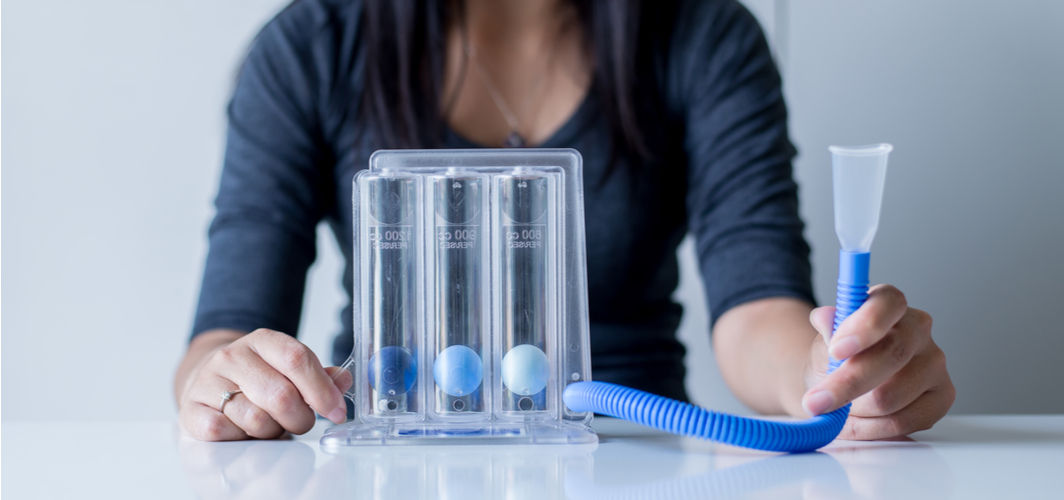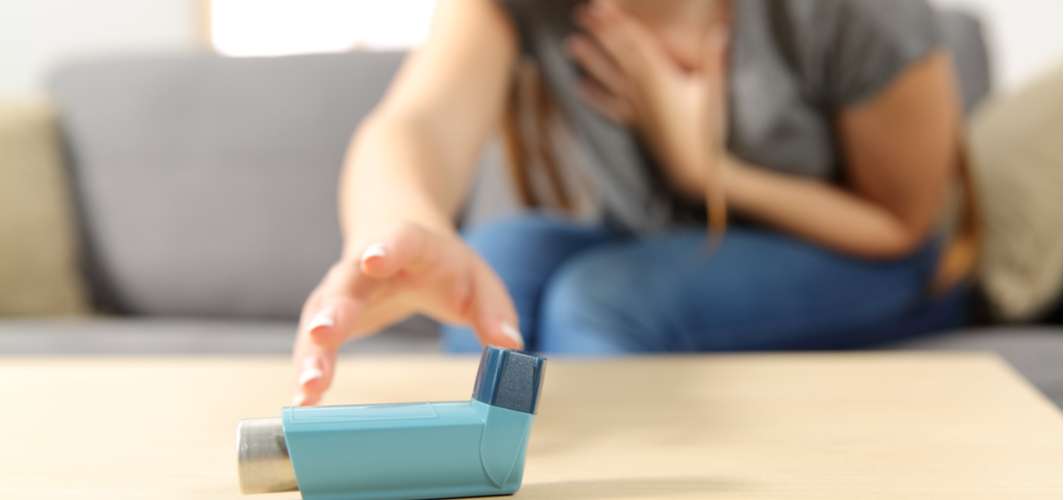Respiratory Health
Understanding the Role of Spirometry in Assessing Lung Health
5 min read
By Apollo 24/7, Published on - 11 June 2021, Updated on - 22 October 2022
Share this article
0
4 likes

Spirometry is a standard pulmonary function test that is performed to evaluate how well the lungs are working, by calculating their breathing capacity. It works by measuring the volume and speed of air inhaled and exhaled by the lungs.
What is spirometry used for?
Spirometry is performed to diagnose chronic lungs conditions such as:
- Asthma
- Chronic obstructive pulmonary disorder (COPD)
- Chronic bronchitis
- Bronchiectasis
- Emphysema
- Cystic fibrosis
- Pulmonary fibrosis
- Occupational-related lung disorders
For people diagnosed with chronic lung conditions, spirometry may be conducted periodically to evaluate the condition of the lungs and determine the effectiveness of treatment and medication in improving breathing problems. The test may also be performed before a planned operation to decide whether the lung function of a person is adequate enough to withstand the rigours of surgery.
How to prepare for this test
A doctor will give a few instructions to help an individual prepare for the test. Some of those instructions will be:
- Avoid smoking at least 1 hour before taking the test
- Avoid intake of alcohol for at least 24 hours before taking the test
- Avoid wearing tight clothes that may restrict breathing during the test
- Avoid eating a large meal before the test as it may have an impact on breathing
People who are on breathing medications such as bronchodilators may be given specific instructions about their use prior to the test. In some cases, a doctor will ask a person to stop the use of bronchodilators in order to test their effect on breathing.
Spirometry procedure
A spirometry test is generally performed by a doctor or nurse at a clinic. The following procedure can be expected during the test:
- The person will be seated during the test. A clip will be placed on their nose to keep both the nostrils closed.
- The person will be given a tube called a spirometer. They will be asked to seals their lips tightly around the mouth of the spirometer.
- The person will be instructed to take a deep breath in, hold it for a few seconds, and then exhale as quickly and forcefully as possible into the spirometer. They will be asked to repeat this step at least three times to ensure that the test results are consistent and accurate.
- If there is too much variation between the test results, then the person will be asked to take the test again. The doctor will take the highest value from three close test readings and use it as the final result.
Nevertheless, if a person exhibits signs of a breathing disorder, then the doctor will administer a bronchodilator to open up the lungs after the initial round of tests. They will be asked to wait for 15 minutes before doing another set of the test. Later, the results of the two measurements will be compared to determine the bronchodilator’s effect on the airflow.
Interpreting the spirometry test results
Doctors use the following key measurements to interpret the spirometry test results.
- Forced Vital Capacity (FVC): It is the maximum quantity of air that a person can exhale forcefully after breathing in as deeply as possible. A lower than standard FVC is indicative of restricted breathing.
- Forced expiratory volume (FEV-1): It is the amount of air a person exhales during the first second of the FVC. A doctor uses FEV-1 reading to determine the severity of breathing problems. Lower FEV-1 reading implies significant obstruction in breathing.
- Tidal volume: It refers to the normal amount of air that moves in and out of the lungs during each respiratory cycle when no extra effort applied. In an average young adult, the normal tidal volume is approximately 7 mL/kg of body mass.
It is important to note that the results of spirometry testing may vary from person to person. A number of factors, including age, gender, height, ethnicity, etc. influence the average spirometry test results.
Side effects and risk
Spirometry is generally considered a safe pulmonary function test. However, a few complications may occur during or after the test. After performing the test, a person may experience dizziness or shortness of breath. In very rare cases, the test may cause severe breathing problems.
Since the test requires some form of exertion, it is not recommended to people with chronic heart ailments or those who have recently had a heart attack.
Incentive spirometer
A physician may recommend the use of an incentive spirometer at home (also called respirometer) to people who have recently had surgery, people with chronic lung disease, or those with respiratory problems that fill their lungs with fluid.
An incentive spirometer is an equipment that is used to improve lung function after surgery or a respiratory illness. The device supports lungs recovery by helping a person breathe more deeply and fully. The use of an incentive spirometer can also help prevent complications such as pneumonia by keeping the lungs free of fluids.
The general procedure of using an incentive spirometer is as follows:
- Sit at the edge of the bed.
- Hold the device in an upright position.
- Tightly cover the mouthpiece with your lips to create a seal.
- Slowly inhale as deep as you can until the piston in the central column gets to the goal set by your physician.
- Hold your breath for a minimum of 5 seconds, then breathe out until the piston falls to the bottom of the spirometer.
- Rest for a few moments and repeat at least 10 times per 60 minutes.
Conclusion
Spirometry is a simple and useful pulmonary function test that is used to assess how well the lungs are working. It is usually performed to diagnose respiratory conditions such as asthma, chronic obstructive pulmonary disease (COPD), chronic bronchitis, pulmonary fibrosis, etc. If the spirometry test yields abnormal results, a physician may likely perform a few other tests, including chest and sinus X-rays and blood tests, to figure out whether or not the breathing problems are caused by such respiratory conditions. The physician may also recommend the use of an incentive spirometer or respirometer to improve lung function.
For any queries or concerns related to respiratory health, speak with a pulmonologist.
Respiratory Health
Leave Comment
Recommended for you

Respiratory Health
What Are The Common Asthma Triggers?
Asthma causes inflammation and narrowing of the airways, making the airways overreact to certain triggers leading to breathing difficulties, wheezing, and other symptoms.

Respiratory Health
Are Teens Who Stay up Late at Higher Risk for Asthma?
Recent research has maintained that teenagers who sleep and rise late are at an increased risk for asthma.

Respiratory Health
How to Deal with Sniffing, Sneezing, and Other Winter Allergies
For some people, winter is that dreaded period of sniffling and sneezing, triggered by a variety of winter allergies. Such allergies are more common during the cold months on account of increased exposure to indoor allergens.
Subscribe
Sign up for our free Health Library Daily Newsletter
Get doctor-approved health tips, news, and more.
Visual Stories

Can Asthma Symptoms Get Worse Indoors?
Tap to continue exploring
Recommended for you

Respiratory Health
What Are The Common Asthma Triggers?
Asthma causes inflammation and narrowing of the airways, making the airways overreact to certain triggers leading to breathing difficulties, wheezing, and other symptoms.

Respiratory Health
Are Teens Who Stay up Late at Higher Risk for Asthma?
Recent research has maintained that teenagers who sleep and rise late are at an increased risk for asthma.

Respiratory Health
How to Deal with Sniffing, Sneezing, and Other Winter Allergies
For some people, winter is that dreaded period of sniffling and sneezing, triggered by a variety of winter allergies. Such allergies are more common during the cold months on account of increased exposure to indoor allergens.